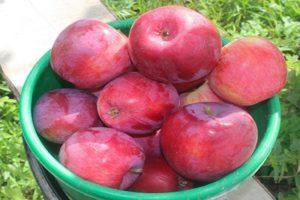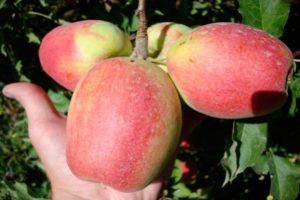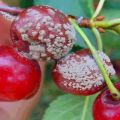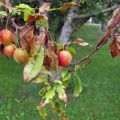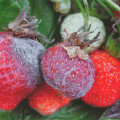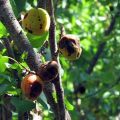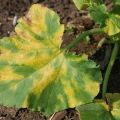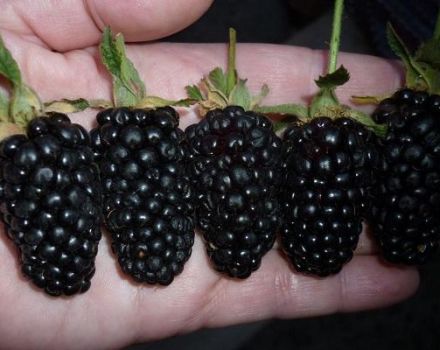What kind of disease is when black spots appear on the leaves of an apple tree, how to treat it and what to do
There are many reasons for the appearance of black spots on the leaves of an apple tree. Most often, the symptom is associated with infection with an infection. Fungi, bacteria or viruses act as the causative agent. Other signs may appear at the same time. It is important to establish the correct diagnosis and begin the correct treatment immediately after detecting a problem. Preventive measures will save the fruit tree from re-infection.
Black spots on the leaves of the apple tree
When infected with various infections, a whole complex of symptoms appears. The appearance of black spots or dots is characteristic of several types of diseases. It is necessary to pay increased attention to the problem and find the most effective method of dealing with it. Otherwise, the quality and quantity of the crop will decrease, and in some cases the problem can lead to the death of the tree.
Less commonly, the appearance of black spots is associated with improper care. The symptom appears with a lack or excess of micronutrients or with an improperly organized watering regime.
What diseases provoke blackening of foliage
The reasons why black dots appear on the leaves lie in diseases such as scab, fire blight or apple cancer... Even a young apple tree can show similar symptoms.
To determine what the disease has affected the tree, you need to conduct a thorough examination.
They study the structure of the spots, the degree of prevalence of the infection (determine whether the fruits, bark, branches are affected). Based on the totality of symptoms, an accurate diagnosis can be made.
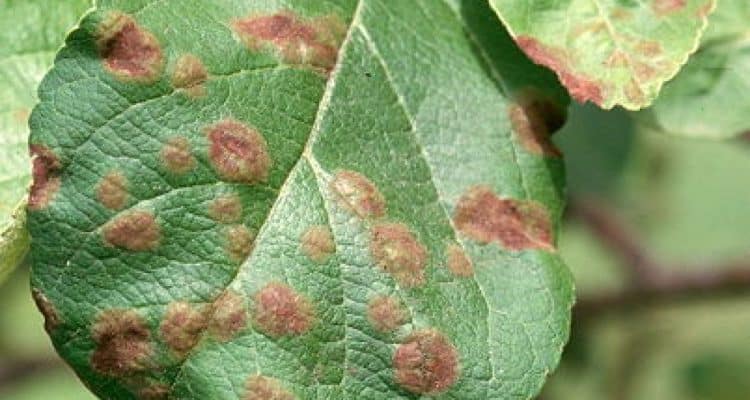
Signs of the disease
The signs of the disease include not only blackening of the leaves. Most diseases are accompanied by the following set of symptoms:
- dying off of individual sections of the bark, changes in appearance, the appearance of cracks;
- curling and drying of leaves;
- premature leaf fall;
- fruit rotting;
- the appearance of dry branches.
Each disease proceeds differently, has distinctive features and requires an individual approach in the development of treatment.
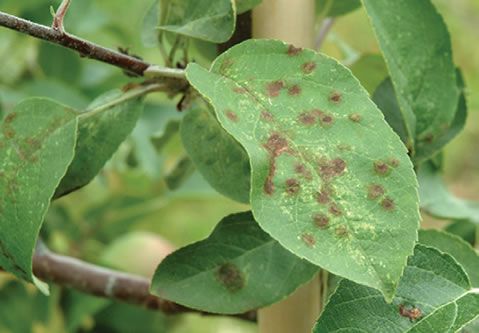
Bacterial burn
You can detect the disease already during flowering:
- The inflorescences turn dark brown and fall off.
- The leaves dry up, turn black and curl. They hang as if burnt, but do not fall off.
- The fruits do not set well, black dots appear on them, which quickly increase in size. As a result, apples dry and hang on branches until autumn.
- The bark softens, becomes covered with white spots that look like mold.
The infection quickly spreads to healthy trees. If you do not start fighting the disease, then in two years all the trees will have to be uprooted.
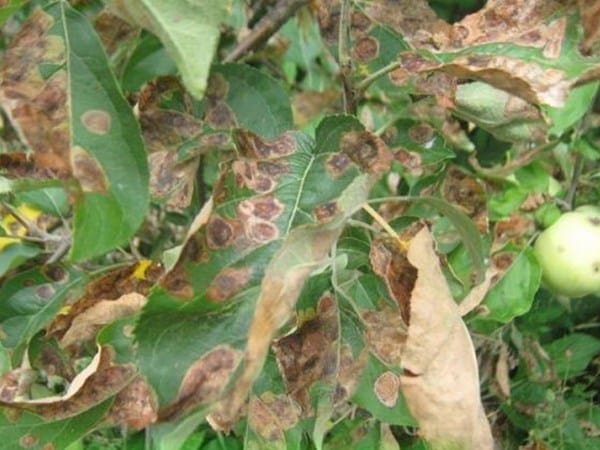
Black cancer
Black cancer belongs to fungal diseases. Spores are most active in hot, humid weather. Symptoms can appear on any part of the tree:
- cracks of a dark brown color are found on the bark;
- black spots are noticeable on the surface of the leaves, over time the leaves dry up and fall off;
- the fruits turn black, shriveled and dry up.
Most often, old, weakened trees are exposed to infection. But in the case of improper care or other provoking factors, even a young seedling can get sick.
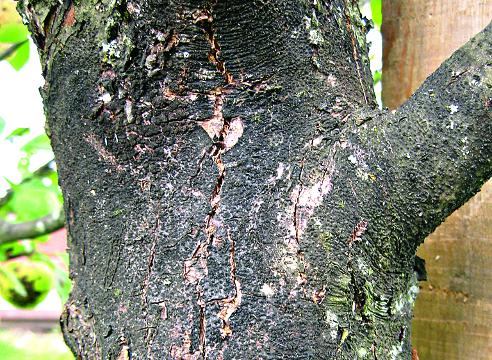
Ring spot
Viruses become the causative agent of the disease. The disease should be suspected by noticing the following symptoms:
- the leaves are first covered with yellow spots, and then the places turn black;
- black rings form on the leaf plate and fruits;
- the tree stops developing and growing.
The disease is difficult to treat. Therefore, it is important to avoid contamination by providing proper care.
Scab
Fungal disease spreads in rainy, cool weather. With the arrival of spring, spores begin to multiply actively and affect all parts of the tree.
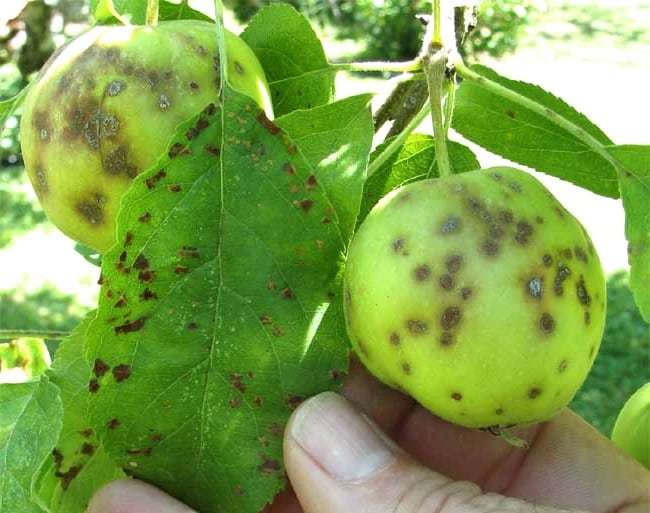
First, gray-green spots appear on young leaves. Over time, it is found that the leaves are completely blackened, dried and fallen off. Black spots on the fruits increase in size, as a result, the apple rots.
Sooty bloom
A fungal infection causes a black sooty plaque to appear on the surface of leaves, fruits and shoots. All damaged parts of the plant stop absorbing air and light.
Lack of magnesium and manganese
Lack of micronutrients often causes leaf spots. With a lack of magnesium, the leaf plate between the veins first turns yellow. Then black spots appear. The affected leaves fall off, the fruits are small and not tasty.

With a deficiency of manganese, the edges of the leaves first begin to turn yellow, and then the entire plate, the veins remain green. Then dark spots appear and the leaves fall off.
Terms and technology of processing
Each case has its own ways of dealing with what to do with the problem. The growing season, the age of the tree, the causative agent of the disease, and the prevalence of infection are taken into account.
Bacterial diseases
How to deal with bacterial infections? In most cases, the fight is carried out with antibiotics. Make solutions based on drugs such as "Streptomycin", "Tetracycline", "Gentamicin", "Kanamycin". Bactericidal biological products also help: "Gamair", "Fitosporin", "Gaupsin", "Pentafag".
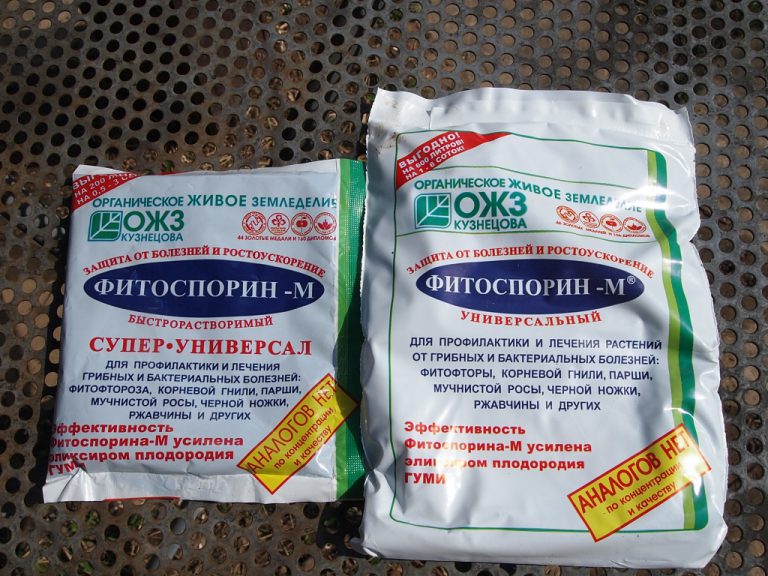
Fungal lesions
For fungal diseases, solutions based on preparations containing copper are effective: "Skor", "Topaz", "Hom". Spraying the crown with Bordeaux liquid helps.
Viral infections
There are no drugs against viral diseases. Therefore, you should follow the agrotechnical practices:
- pruning should be done in February;
- all removed parts of the tree must be burned;
- if a problem is found, the application of phosphorus and nitrogen should be reduced;
- for spraying the crown, it is recommended to use the preparations "Epin" or "Zircon";
- pest control must be carried out.
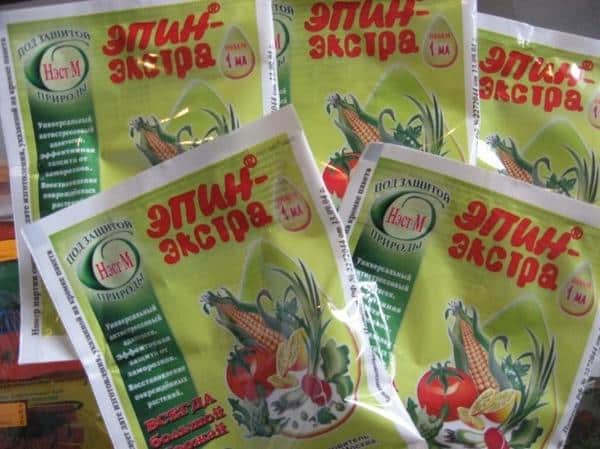
All these preventive measures will help boost the plant's immunity.
What drugs to use
When determining how to treat apple trees, you need to take into account the causative agent of the disease and the season of treatment. The processing is carried out with biologically active agents, chemicals and compositions based on folk recipes.
How to protect your garden from re-infection
In order to prevent re-infection with the infection, you should properly care for the trees. It is important to introduce the necessary microelements on time, remove damaged and dry branches, weed the area around the trunk from weeds.

Preventive treatment of the entire garden
Apple tree care differs depending on the season. Preventive measures will reduce the risk of developing and spreading infection.
Spring
Spring processing is carried out before bud break. For spraying use a solution based on "Zircon". Remove dry and damaged branches. Wounds and cracks are covered with linseed oil or garden varnish. The soil is disinfected with a solution of urea and ammonium nitrate. Immediately after flowering, treatment should be carried out with such preparations as "Kuprozan", "Tsineb", "Horus", "Hom", "Vectra".
Summer
In summer, with the arrival of stable warm weather, trees are treated with fungicides: "Gamair", "Raek", "Fitolavin", "Zircon", "Fitosporin".

Autumn
In autumn, all fallen leaves are raked up and removed from the garden or burned. The trunks need to be whitewashed, and the near-trunk zone must be deeply loosened. Spraying with a solution of copper sulfate is also recommended.
Proper care and fertilization
Proper care of apple trees includes the following points:
- digging and weeding of the near-stem zone;
- establishment of an irrigation regime;
- crown formation;
- trimming;
- preventive treatment against pests and diseases.
It is important to apply fertilizers on time. The apple tree is fed:
- organic matter (manure, humus, bird droppings);
- mineral fertilizers (urea, ammonium nitrate);
- micronutrient fertilizers (boron, manganese).
Each type of feeding should be introduced at a certain time, observing the dosage.
